Dig up dirt. Treat like dirt. Dirt poor. Replace the word “dirt” with “soil” and you get phrases that make no sense. This is a roundabout way of explaining that “dirt” and “soil” are not the same things, either in idioms or in the garden. Yet many of us effectively turn our soils into dirt through poor garden practices.
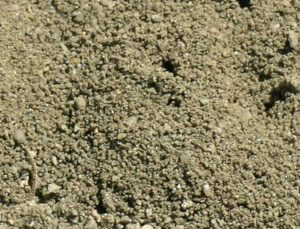
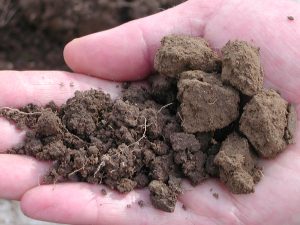
For the purposes of this post, we’re going to use a single criterion to distinguish between soil and dirt: one is a living ecosystem and the other is not. A thriving soil ecosystem contains sufficient water, oxygen, and nutrients to support bacterial, fungal, plant, and animal life. Regardless of soil type, about half of the volume in a living soil should be pore space and the other half soil particles. Half of the pore space should be filled with water and the other half with air. When we make choices about activities that affect garden and landscape soils, we need to be proactive in preserving both the particle-pore balance as well as connectivity between the soil and the atmosphere.
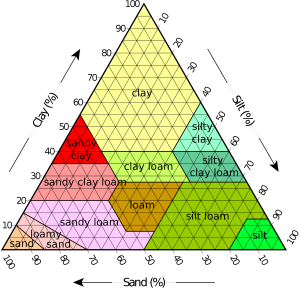

The only way pore space can be reduced is through soil compaction. So don’t do it.
- No driving. If equipment must be brought in, put down a thick layer of wood chips to protect the soil, or at least plywood.
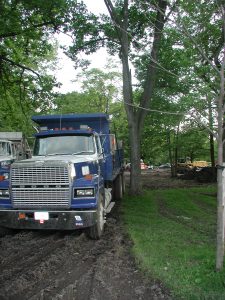
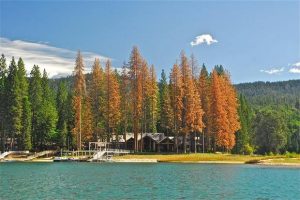
- No naked soil. Bare soils are compacted soils. Mulch!
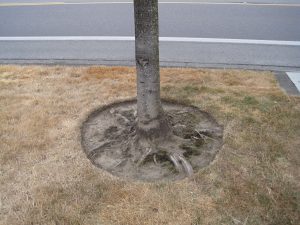
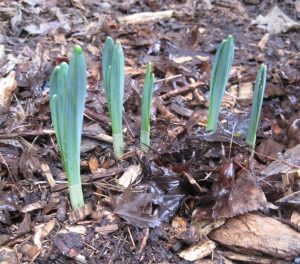
- No rototilling. It grinds your living soil into dirt. Disrupt the soil as little as possible when you plant.

- No stomping, pressing, or otherwise compacting the soil during planting. Let water and gravity do that work for you.
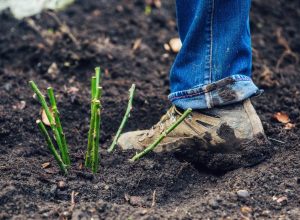
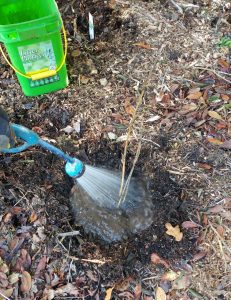
The only way soil and atmosphere connectivity can be disrupted is by covering the soil with low permeability materials. So don’t do it.
- No soil layering. Don’t create abrupt layers of soils with different textures. It interferes with water and gas exchange.
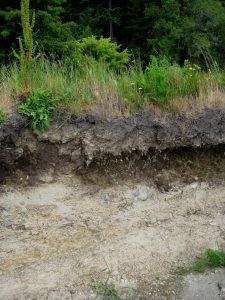
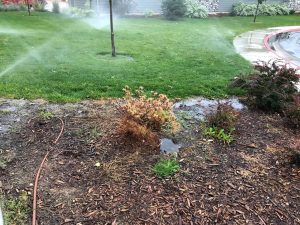
- No sheet mulches. I’m sure you’re tired of hearing me say that and I am tired of saying it. Sheet mulches have less permeability than chunky mulches. That means oxygen and water have more difficulty getting through. Period.
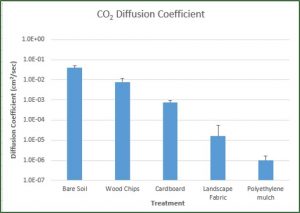
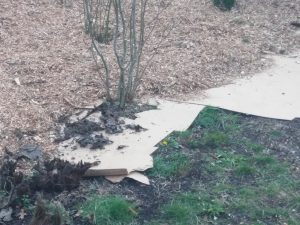
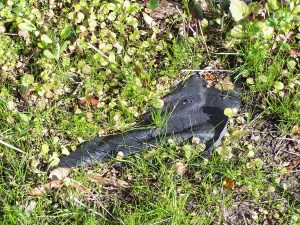
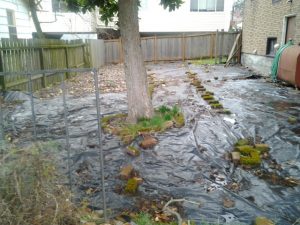
Do use lots of groundcovers, chunky mulches, and hardscape in areas where there’s considerable foot traffic. They all protect the soil and are important parts of a well-designed, sustainable landscape.
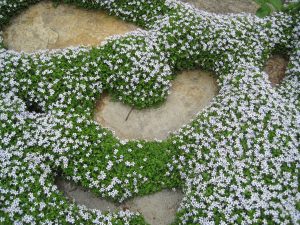
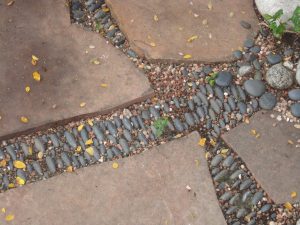
If you just can’t get enough about soil science for gardens and landscapes, do check out this new publication by Dr. Jim Downer and myself.
So many people advocate sheet-mulching/”lasagna” gardening?
Are they crazy? dead wrong?
They are just repeating something they’ve heard. There is no science bahind it at all.
The referenced publication you authored includes this language: “With climate change no longer just a theory but a clear threat to our way of life”. Can you provide citations supporting this statement?
I presume you’re familiar with AAAS? You can read their affirmation of the seriousness of climate change – back in 2006 – here (https://www.aaas.org/resources/aaas-reaffirms-statement-climate-change).
“The AAAS Board of Directors asserted in a statement issued 9 December 2006 that “the scientific evidence is clear: global climate change caused by human activities is occurring now, and it is a growing threat to society.” Clear evidence of climate change is based upon “accumulating data from across the globe” that reveals “a wide array of effects: rapidly melting glaciers, increases in extreme weather, rising sea levels, shifts in species ranges, and more,” the AAAS Board reported. Reliable sensor data show an upturn in average temperatures for at least the past 30 years.”
My only complaint is that I just did a talk yesterday on this very subject. Please try to read my mind and post a week earlier from now on! Great information. We seem to agree 100%!
Too funny! Thanks for commenting.
Dirt to me is indoors, e.g. dust bunnies, spilled coke making a sticky counter. Soil is what mother earth provides for us. One more: can we stop saying Climate change, I believe people do not really understand that its Earth Changes that cause Climate change therefore they do not associate the decline of our plant by deforestation, herbicides and pesticides being used, unnatural grass in front lawns, saturation of concrete cities, mining, fracking, digging and emptying our earths core, plastic in our oceans, farmers shooting wolves. I could go on with the Earth Changes that cause climate changes. Just saying
Human induced climate change is causing changes to occur more rapidly than happen naturally. This fact is not in contention by the vast majority of scientists. Hiding our heads in the sand – or dirt – is not going to help.
How can you accommodate native solitary bees which build holes in bare ground?
You can leave the soil bare underneath shrubs. There is little there for weeds and few fine roots, so that’s a perfect, protected space (and probably what you would find naturally).
Not to be argumentative, but isn’t it better for shrubs to be well mulched? Perhaps a workable compromise would be to leave a small bare spaces here and there throughout the garden.
Their uptake roots are not underneath them. You need to understand that the functional uptake root system of a woody plant extends 3-5 times its crown diameter. There are few resources left directly underneath an established plant. That’s why their roots spread outward. That’s why I said weeds won’t grow well there.
What on earth have they done to compact the soil under those conifers? Is it not more likely that all the foundations for those chalets has done the damage?
When you build a house, you run all kinds of heavy machinery in there to dig out space for foundations, level and compact the soil, etc. A foundation in and of itself is not going to signficantly affect the root zones of all those trees.
When I took soil Science course in 1978 the Professor began the first class saying dirt was what you washed off your hands. If you call soil “dirt” you will be warned the 1st time. Do it again and you fail the course.
He was a very good teacher, one of the best classes I took at The University of Maine. He was interested in organic methods, which most of the faculty bashed.
I’ve learned a lot from your articles, as well as from Robert Pavlis’ ones from gardenmyths.com. And I believe I do apply this lectures in my garden. However I miss one thing on this subject – how does one change compacted soil? My garden is in urban area, and when our settlement was built, there was heavy equipment used – extensively. More over they levelled the area with bulldozers, mixed up soil layers, added 20-50 cm of so called “rich soil”, compacted it again. My garden grows quite well I guess, but I can see how bad it is at absorbing water. Is there anything that can be done? Adding lots of compost? I can see a positive effect by mulching in top layers.
There is no quick fix for compacted soil – it is going to take a little time. But if you are willing to wait a month or two, using arborist wood chips to relieve compaction is the best thing you can do. If you search through the blog archives for “wood chips” you will find this topic addressed extensively. Don’t add compost as you will overload the nutrient levels of your soil. Put down thick layers of coarse arborist chips wherever you have bare soil. Consider it a soil-building place holder. When you are ready to plant something, simply move it aside, plant, and then replace the mulch.
Hi, could you please go through possible methods to combat a compacted soil? My garden has a topsoil of 20-50cm, and below that is sth I can’t even describe, but hard, clayish, inpenetrable by water. And that topsoil was also driven on heavy machinery. I believe it gets better at least on plant beds area, but grassy part is hard as concrete. Is there anything I could do to loosen it? Aeartion maybe? Or – just don’t shout at me for that proposal – rototilling with lots of compost, mulch ?(knowing it may cause problems first, but in 5 years time..?)
You don’t need to rototill and that only destroys soil strucutre and further compacts the soil underneath the tilled area. Look at my answer to your other question about how to do this naturally and sustainably.
Thank you very much for commentary and advice. Just to clarify – I posted two comments by mistake, it basicly the same question/problem. Best regards, Michał
You previously wrote an article saying cardboard under compost mulch was fine for vegetable gardens. Have you changed your views?
I never suggested cardboard but years ago said possibly newspaper. In that ensuing time it’s become apparent that (1) there is no research to support using either cardboard or newspaper and (2) that there is research showing that sheet mulches impair gas exchange. That’s what’s great about keeping up with the science – we are all learning new things.
Excellent info. I’d love to hear your thoughts on the value of air de-compaction services for recently compacted soils, especially around mature trees that are stressed, or likely to become stressed, from construction projects (we often get called in only afterwards). I have in mind what is sometimes called “air tilling” or “radial trenching” with an Air Spade or similar device.
Craig, I’ve not been able to find any published research comparing mulch to air-spading for relieving compaction. That would be a very useful experiment. Since deep mulching has been showing to relieve compaction (and do lots of other beneficial things for the soil and plants), I’ll continue to recommend it. Hopefully someone with research dollars will critically evaluate air spading for this purpose as well.